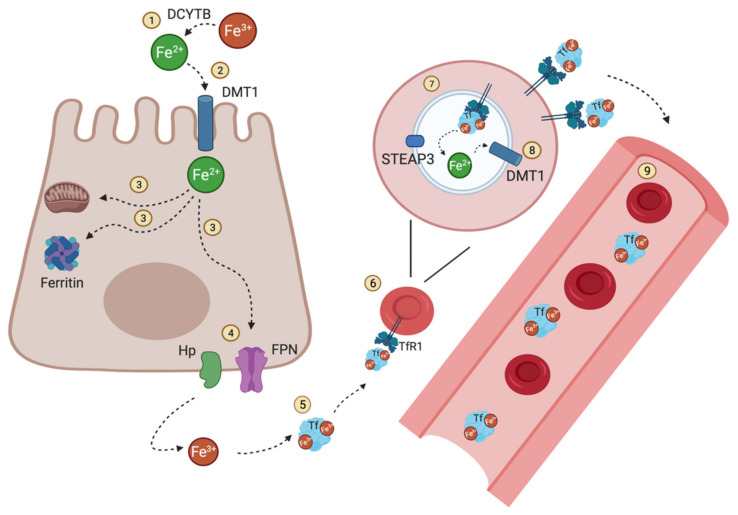Figure 1.
Iron distribution and circulation. Nonheme dietary iron Fe3+ is reduced to Fe2+ by the iron reducing DCYTB (1) prior to its uptake at the apical membrane of enterocytes via DMT1(2). Fe2+ can then be directly used for intracellular mechanisms, stored when bound to ferritin or released directly into the circulation (3). (4) Therefore, reduced iron Fe2+ is transported by ferroportin (FPN), the only known iron exporter so far, and then oxidized by hephaestin Hp to be then bound to Tf (5). Most of the iron present in the circulation is bound to Tf. As a result, erythrocyte precursors (erythroblasts) take up this transferrin-bound iron via TfR1(6). Fe3+ bound to transferrin is reduced in the endosome by ferrireductase STEAP3 to Fe2+ (7) where it is exported via DMT1 (8) into the cytosol and enters the labile iron pool. Mature RBCs circulate in the blood for around 120 days (9) until they are removed from the circulation during erythrophagocytosis. The illustration was created using BioRender.com, (accessed on 3 April 2021).

